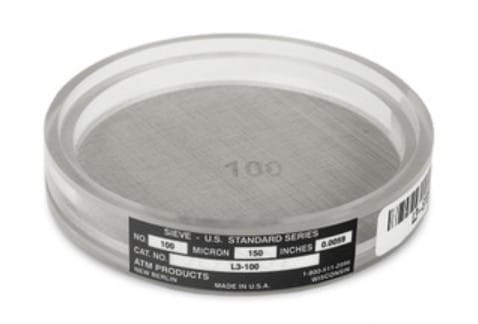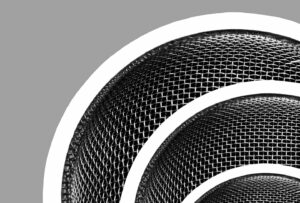Metrology Glossary: Test Sieve
What Is A Test Sieve?
A test sieve is a device used for determining particle size and size distribution in material samples that operates by guiding the sample through an array of wire mesh screens featuring various aperture sizes. This method relies on whether particles are retained or allowed to pass through based on their size. Particles exceeding the screen’s aperture will be trapped on the mesh, while those smaller than the openings will pass unobstructed. This screening process provides valuable data regarding the granulometric characteristics of substances, aiding in quality control and research endeavors across various fields.
What Are Test Sieves Used For?
Quality Control:
- Food and Beverage Industry: Ensuring uniform particle size in ingredients such as flour, sugar, and coffee grounds to optimize texture and facilitate efficient processing.
- Pharmaceutical Industry: Validating the size distribution of drug particles to ensure precise dosage and effective drug delivery.
- Construction Industry: Analyzing the grain size distribution of sand, gravel, and other aggregates to refine concrete and asphalt formulations.
- Chemical Industry: Separating and grading catalyst particles to guarantee efficient chemical reactions.
Environmental Monitoring:
- Air Quality Analysis: Analyzing airborne particles based on size to identify pollutants such as dust and pollen for comprehensive air quality assessment.
- Water Quality Monitoring: Filtering out microplastics and other contaminants to monitor and maintain water quality.
- Soil Health Assessment: Studying the particle size distribution of organic matter and minerals to assess and maintain soil health.
Research and Development:
- Material Science: Investigating particle size and distribution in new materials to optimize properties such as strength, conductivity, and porosity.
- Geoscience: Analyzing soil and sediment samples’ grain size to comprehend geological processes and environmental changes.
- Agricultural Science: Determining the size distribution of seeds and fertilizer granules for optimal planting and enhanced crop yield.
- Forensic Science: Separating and identifying particles in evidence, such as paint chips, fibers, and soil samples.

Related Terms
A magnetic separator is a device used in various industries that uses magnetism for the extraction of magnetic particles from a blend....
A centrifuge is a mechanical device that uses centrifugal force to separate materials based on their diverse densities....
An air sampler is a device or equipment designed to gather a precise volume of air within a designated time frame, serving to assess the quality of air in a...





